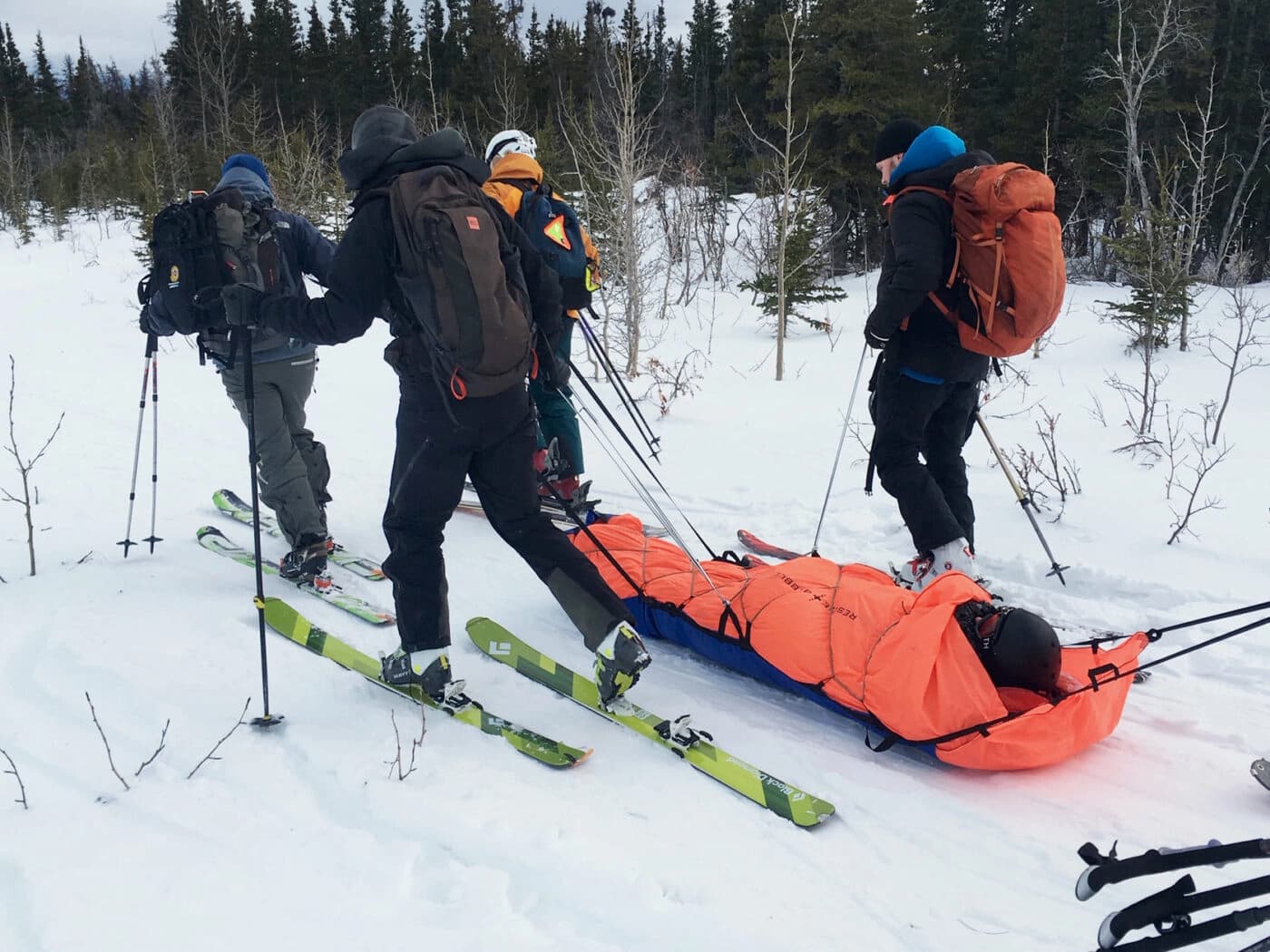Bridge the gap between avalanche training, wilderness first aid, and backcountry emergencies…
Thank-you for your interest in the Backcountry User Rescue and Survival Training (BURST). This 1day course is intended to bridge the gap between formal recreational avalanche training, wilderness first aid training, and introduces concepts to best manage backcountry emergencies.
Here are some of the topics included in the 1day BURST:
- Search & Rescue in Canada (how to activate, what to expect)
- Choosing appropriate communication devices
- Avalanche mitigation in rescue situations
- Hypothermia prevention & management
- Emergency evacuation techniques
- Tree well awareness & rescue
- Winter survival shelters
- Winter fire skills
Contact us to inquire about our 2day BURST for amateur leaders.
This 1day course is based entirely outside at a local backcountry touring/snowshoeing location in the West Kootenays. Dress accordingly and expect to be outside all day from 8am to 4pm.
Intermediate backcountry skiing or boarding ability is an asset (touring equipment, snow board, snowshoes or split board required). Previous avalanche training useful but not required. Students are responsible to self evaluate their skills as groups need to be matched together based on prior experience and ability. Please contact us to discuss your background.
Backcountry Touring & Avalanche Skills Equipment List
In addition, students should bring the following for this course:
-Tarp (6×8’ min)
– 5-6m of 6-7mm cordalette
– Duct Tape
– Space Blanket
– 2 puffy Jackets (one to be worn, one for the patient)
– Wood Saw (35cm)
– Foam Pad or small Thermarest
– Fire Starting material
– 10m of small (1-2mm cordage or paracord)
This course is based in Nelson BC. Field days will occur in the Selkirks Mtns, the local backcountry near Nelson. Details will be given to participants before course start. For a list of possible venues click Nelson Classics.
Kootenay weather can vary drastically. In winter you can expect temperatures to be from -20C to –5C in the day while in spring daily temperatures could rise well above zero. Visibility may be poor or whiteout conditions when snowing heavily or clear on bluebird days. Ensure you are dressed for all variations as temperatures, wind, precipitation can change within the day.
What’s included:
- Pre-trip planning support
- Certified ACMG, IFMGA and/or CAA instructor
- Class notes
- Group safety equipment (communication device, rescue kit, improvised rescue sled, first aid supplies, GPS, maps)
Not included in price:
- Lunch, snacks
- GST 5% tax
- optional field book: Staying Alive in Avalanche Terrain
- Personal ski touring boots, skis, skins or splitboard
- personal avalanche safety equipment *SMG rentals available $50/day for complete set or beacon ($30), shovel ($15) & probe ($15)
- Transportation to touring location
- Trip cancellation, adventure travel insurance, medical insurance
Where can I rent Ski touring and safety equipment?
Here are a few outdoor stores in Nelson that supply good service and quality outdoor equipment and gear rental, please ensure you rent gear well in advance.
ROAM phone 250-354-2056
Valhalla Pure Outfitters phone 250-354-1006
Gericks phone 250-354-4622
Sacred Ride phone 250-354-3831
What transceiver should I use?
If you are interested in touring in the backcountry with friends or take one of our courses, it is very important to get a modern “triple antenna digital transceiver” with a marking function. We ask participants to ensure that they have a digital transceiver for the course.
For recreational skiers and boarders, we suggest the following beacons: Mammut-Baryvox “Element”, Ortovox “Zoom”, Peeps “Recon” or the Tracker “3” or “S”. For people that moving towards working in the ski industry a more professional “more advanced” beacons is recommended, such as Mammut-Baryvox “Pulse or S”, Ortovox “3+“ or Peeps “guide”, etc.
Skis, Telemark or Split Boards?
Which should you use? If you are a downhill skier then you should use Alpine Touring gear. Only if you are already an advanced Telemark skier or Snowboarder should you bring Telemark or Split Board gear. All types of gear can be rented in Nelson prior to your day trip. There are three types of backcountry systems you can use:
Alpine Touring skis are essentially downhill skis with a special touring binding which allows the heel to lift whilst going uphill or across the flats and then ‘locks down’ to become a regular downhill safety binding. We recommend this system to anyone with a background of downhill skiing who is not already an advanced telemark skier.
Telemark skis. These should only be used for this program if you are at least an advanced-intermediate telemark skier with some backcountry experience. This system is more difficult and less forgiving than the others.
Snowboarding with a Split Board is the most effective way to snowboard in the back country. We recommend this system to advanced snowboarder over snowshoeing.








